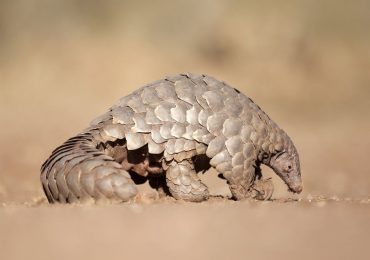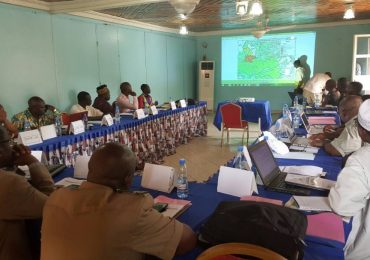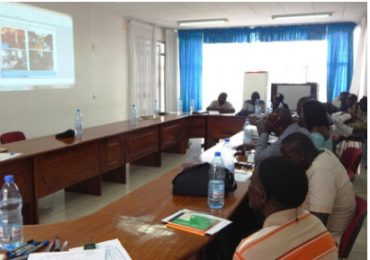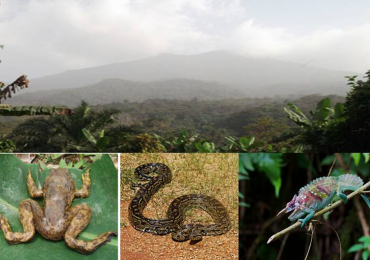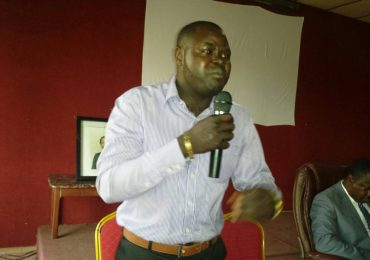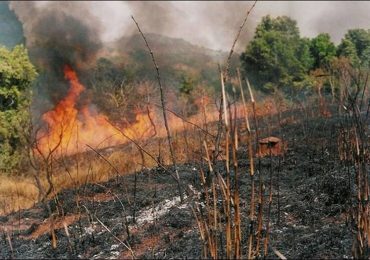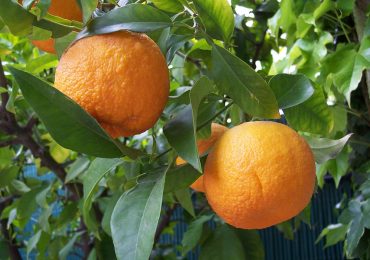Each year, the Mt. Cameroon forest area falls to deforestation, the chainsaw of indiscriminate logging, commercial hunters’ guns and the snares of trappers.
Though recently a portion of the forest area was designated a national park (Mt. Cameroon National Park) and forest reserves created in Mokoko and southern Bakundu (Mokoko Forest Reserve), the Mountain’s rich biodiversity continues to decline.
Towering at 4,095 metres above sea level, Mt. Cameroon is the highest peak in West and Central Africa covered by forests endowed with rich plant and animal biodiversity – boasting of over 3,500 plant species and several animal species.
The Mt. Cameroon forest is divided into the montane and lowland forests. The montane forests are located within four sub-divisions: Buea, Muyuka, Mbonge and Idenau of the Fako Division, while the lowland forests occupy the Meme and Ndian Divisions of the South West Region.
The western slope of the Mt. Cameroon forest is probably the most diverse and richest in West and central Africa with an unbroken vegetation gradient from evergreen lowland rainforest at sea level, through montane forest, to montane grassland and alpine grassland near its summit. This link between ecosystems largely accounts for the biological diversity of the region.
Given the broad and diverse ecosystem that the forest supports, the area serves as an ideal scientific/research site for environmental, botanical and zoological studies. Due to the Mountain’s volcanic nature and fascinating features and values like volcanic craters, springs, lakes and diverse vegetation, the area is a high eco-touristic site.
It records a high number of tourists from all countries of the world ranging between 1000- 1500 persons annually.
Mt. Cameroon forest is also of great cultural significance to the indigenous people. It is regarded as the “Chariot of the gods”. Efazra-Moto is the folkloric god of the Mountain. The cultural heritage of the people lies in the richness of the soil and its forests. The forests and all that is in them are a symbol of the continuity of life for these people.
The forest also contains a host of Non-Timber Forests Products (NTFPs) which are harvested for food and medicine. This trend has been accelerated by the economic crisis and the quest for money. Species which are exploited include Irvingia gabonensis (sweet bush mango), Irvingia wombulu (bitter bush mango), Afrostyrax kamerunensis (bush onion), Piper guineensis (West African bush pepper), Thaumatococus daniella (wrapping leaves). In addition to several timber species, there are also medicinal plants such as the Prunus africana (Pygeum), Anickia sp. (Quinine stick)
Presently, the most pressing environmental problem within the Mt. Cameroon forest is the loss of its biodiversity which is being caused by over-hunting and deforestation.
Hunting is mostly carried out in the form of shooting and trapping. Previously, it was a traditionally accepted activity; animals killed were used mainly for subsistence. Although hunting was not an issue then, it is now commercialized and the number of animals killed is alarming. This has had an effect on the ecological system of the area. For example, the reduction of seed dispersal due to the diminishing numbers of animals acting as carriers. The survival of some plant species is jeopardized in this way.
Meanwhile, the indiscriminate logging of the species by illegal operators in the Mokoko and southern Bakundu reserves makes the conservation of the species a dilemma. Recently, with the allocation of the Mokoko Forest Reserve (lowland forest of the Mt. Cameroon) for commercial exploitation, the disappearance of threatened trees like the critically endangered Microberlinia bisulcata is heightened.
The puzzling question is how much of this critically endangered species will be left in the area after overexploitation? Or are there any conservation measures of the species and many other endangered species put in place before exploitation? In addition, with the commercial exploitation of these threatened species within the area, are the royalties of the communities paid? Or will communities continue to wallow in their abject poverty with no portable water, electricity, basic healthcare and schools while the pockets of a few urban-based elites and politicians of the area bask in the profits raked from exploiting the forests of the area?
Then, there is unrestrained habitat destruction through commercial logging and the collection of firewood. Around the mountain, there is a steady encroachment on the forest through clearing and burning, mainly for hunting and opening up new farms. The largest agro-industry in the country, Cameroon Development Corporation, (CDC) is known to own vast areas of virgin forest, more of which is opened up to plantation agriculture almost every year.
This rich volcanic soil has not only made trees grow in the forest, it has attracted a lot of people who come to this area to farm. Clearing of forests for plantation establishment by the CDC has caused many plant and animal species to suffer from large scale habitat loss. The existence of CDC within the Fako and Ndian Divisions (lowland forests of Mt. Cameroon) are sufficient proof to this. For many people have either lost their jobs in cities or do not earn enough to keep them going, the tendency is to open up a farm. The forests around Mt. Cameroon are considered an ideal place. In search for fertile farmland, they clear patches of forest containing these species. Threatened tree species like the Microberlinia bisulcata (zingana) which have large biomass are regarded as a source of disease (by offering too much shade to crops) and threat (in case of strong winds). Hence; these trees are cut down or killed using chemicals and then burnt to reduce the risks on crops. This has yielded to species population decline. Hence, the conservation of this sp and other threatened spp within the Mt Cameroon forests imperative, since the rate of deforestation in these forests is on the rise. There are also many large farms owned by individuals, especially on the northern slope of the mountain-this agricultural frenzy has been heightened by the economic crisis which prevails in the country at present.
With the disappearance of these forests, many water bodies which derive their source from the Mt are tampered. Recently the upsurge of water shortage within the Buea municipality has been a major cry for concern. The puzzle remains as to whether we would continue folding our hands which serve as main source of water
Soil erosion is already in evidence, with too much water running down the mountain. The cause is said to be the disappearance of the forest. In the rainy season, rocks and pebbles are hurled down the mountain by very powerful run-offs. All these are a result of cutting down forests. How then can we ensure sustainability of these threatened trees at the Mt Cameroon Forest while satisfying our daily and numerous needs?


